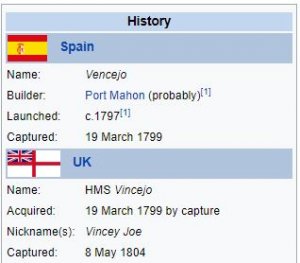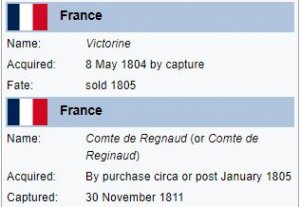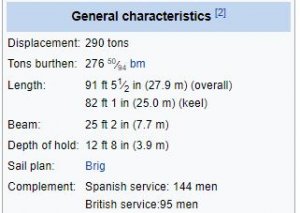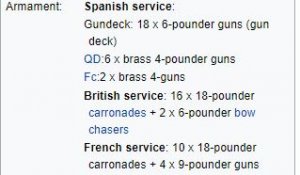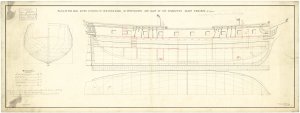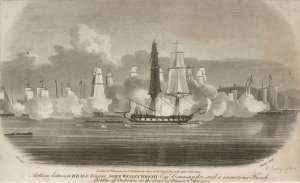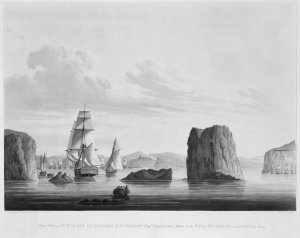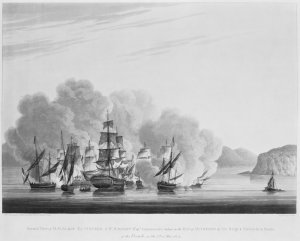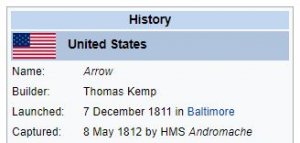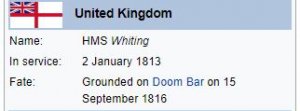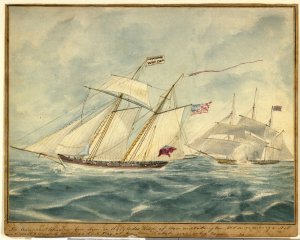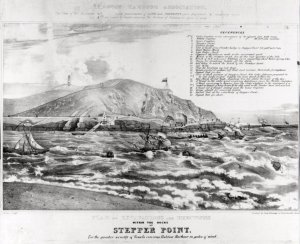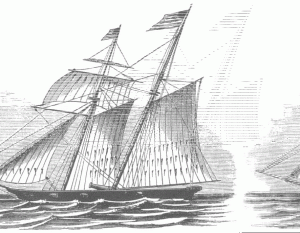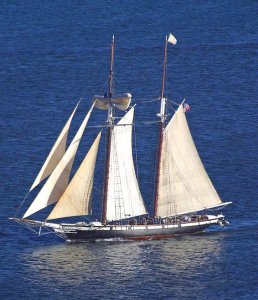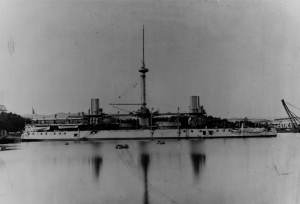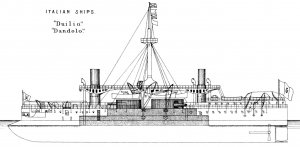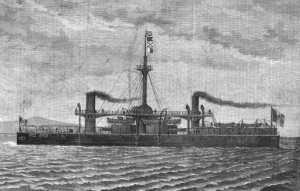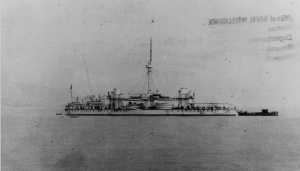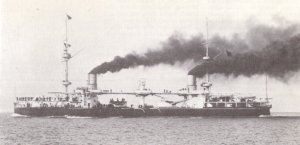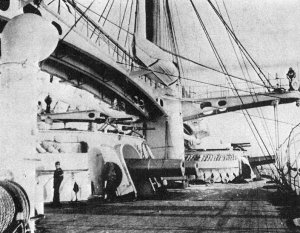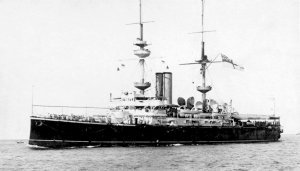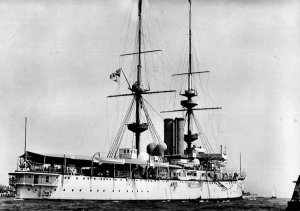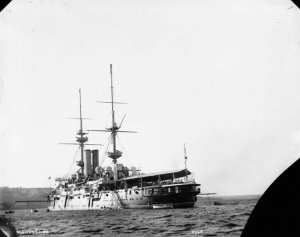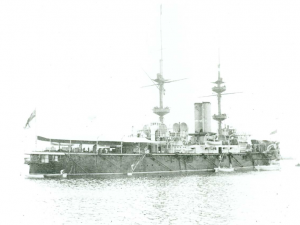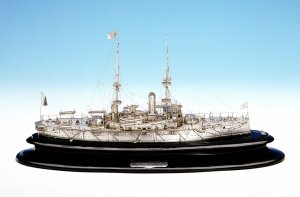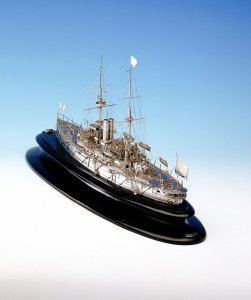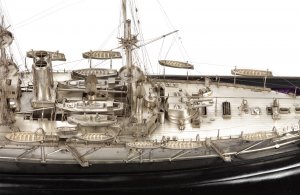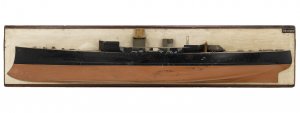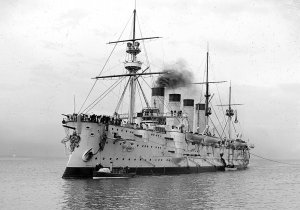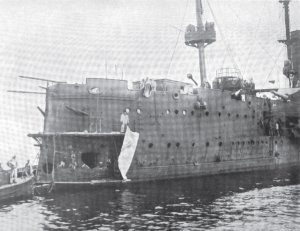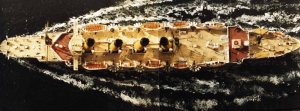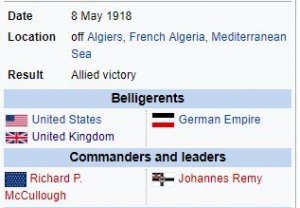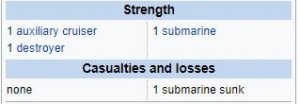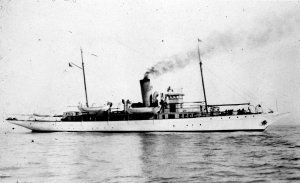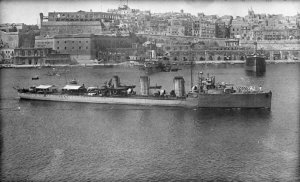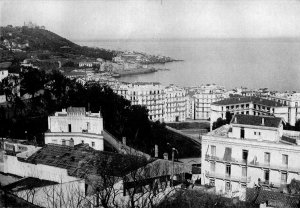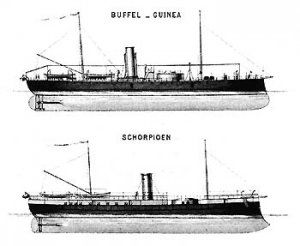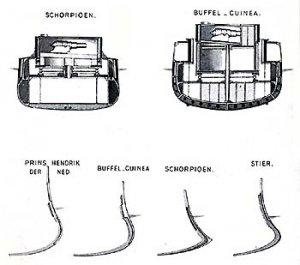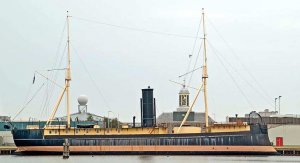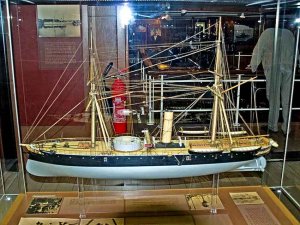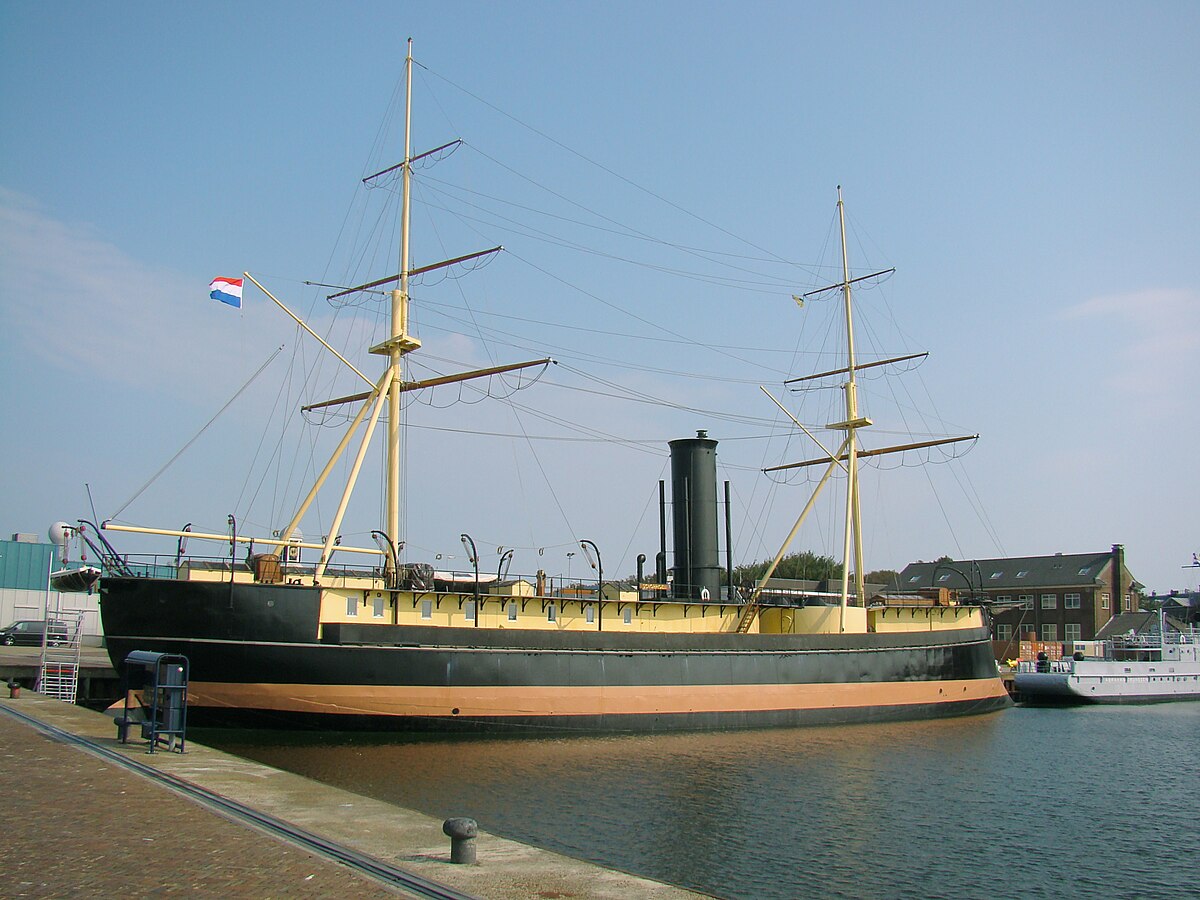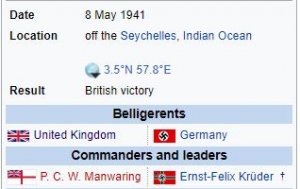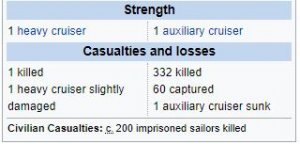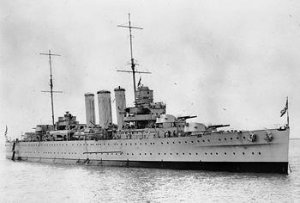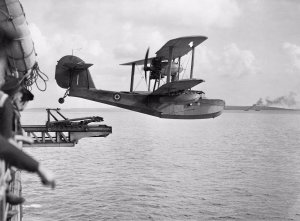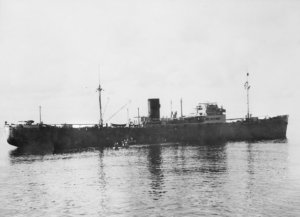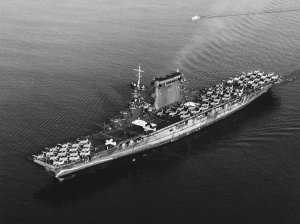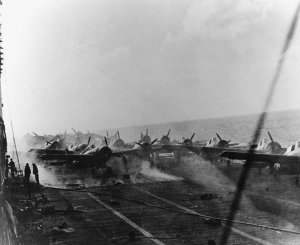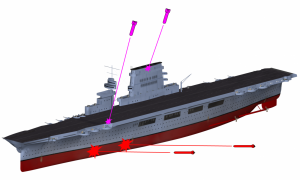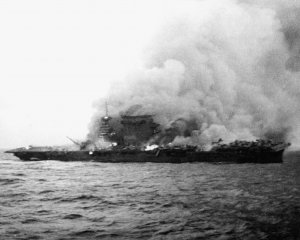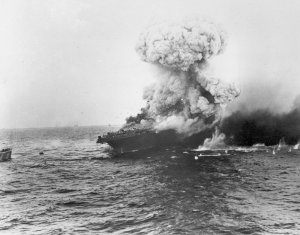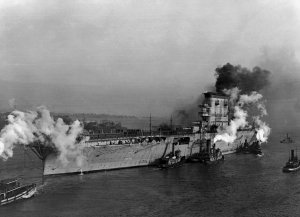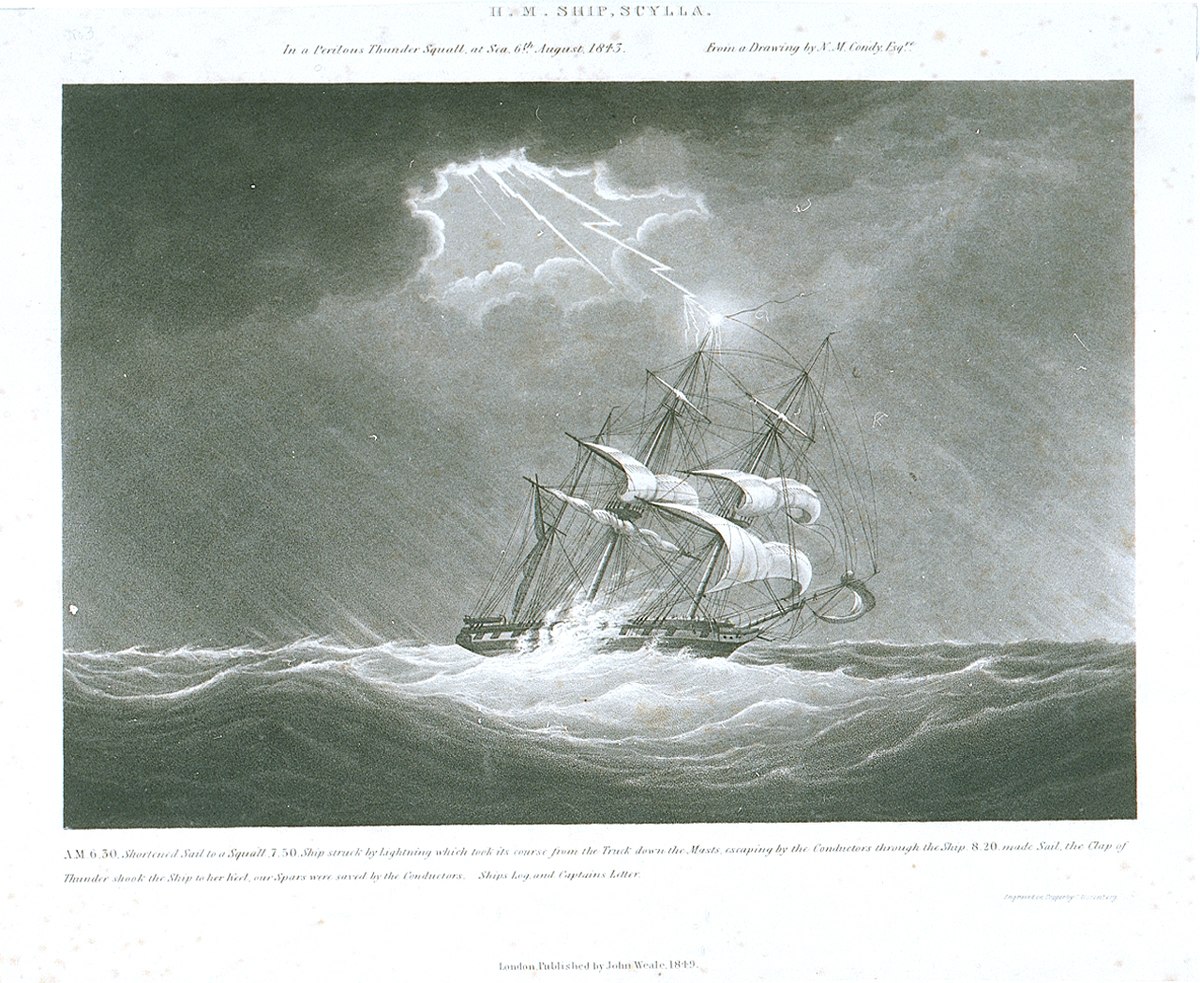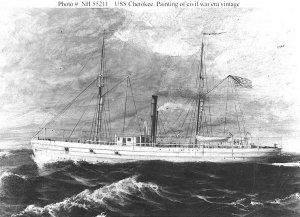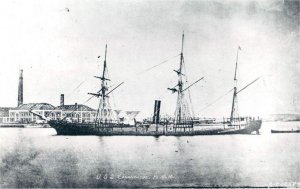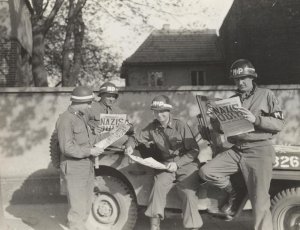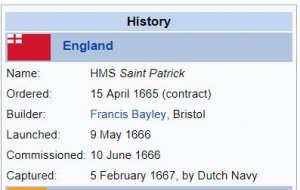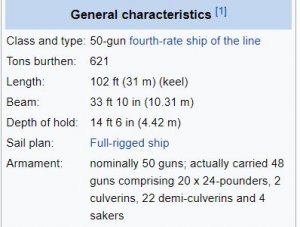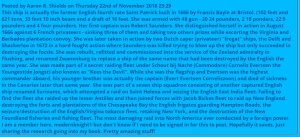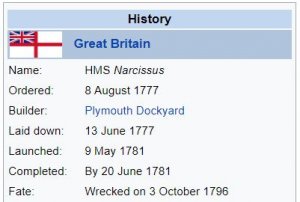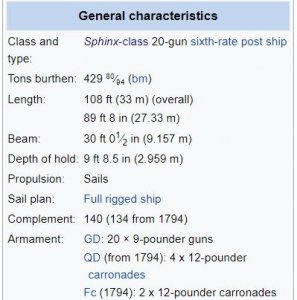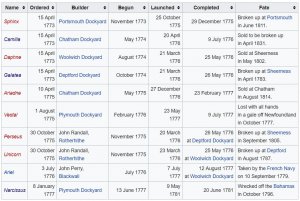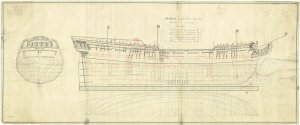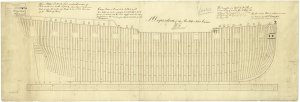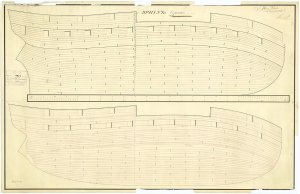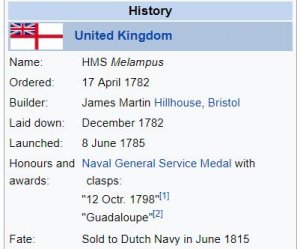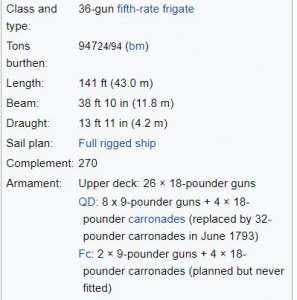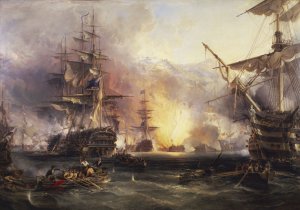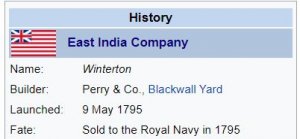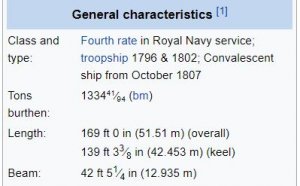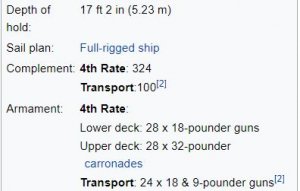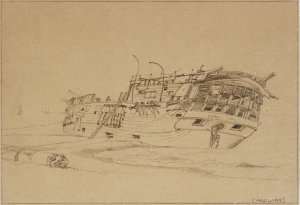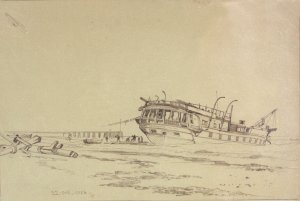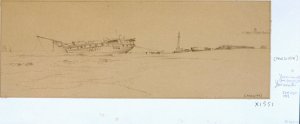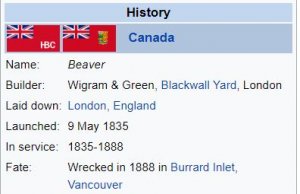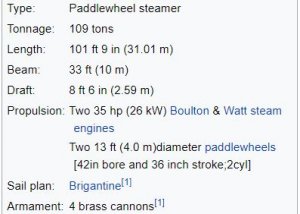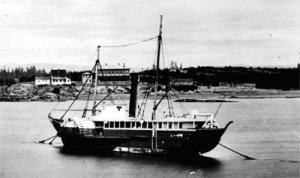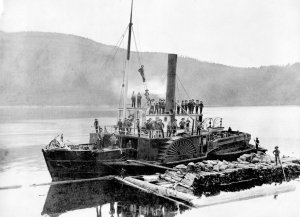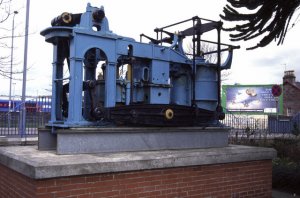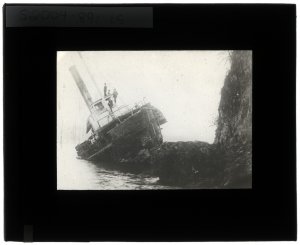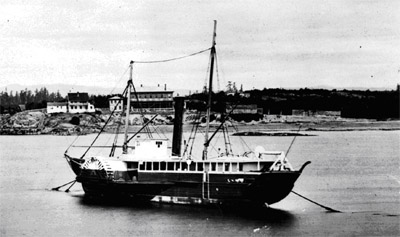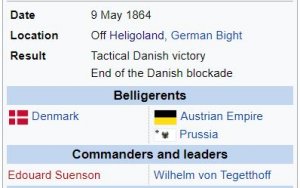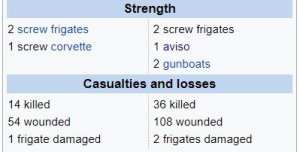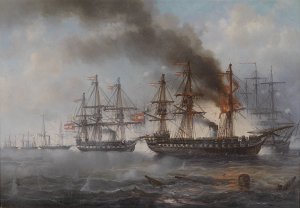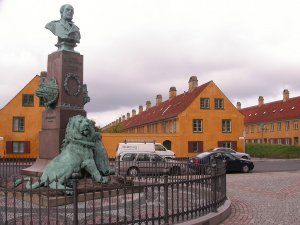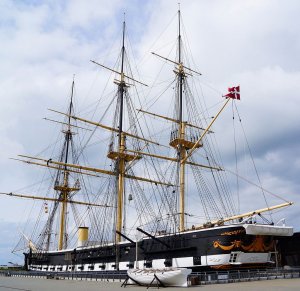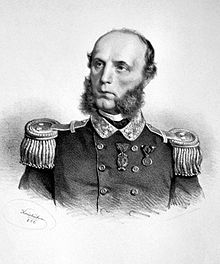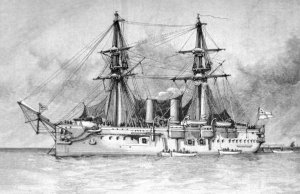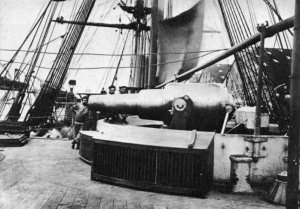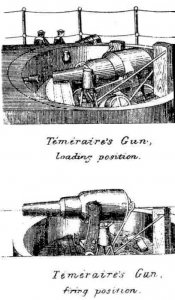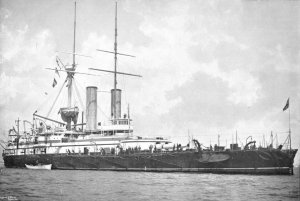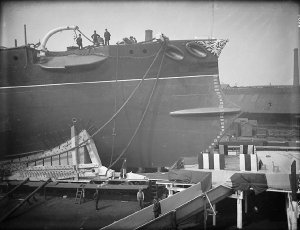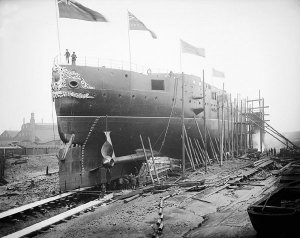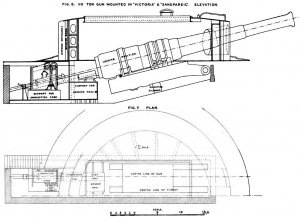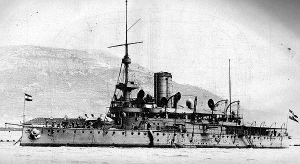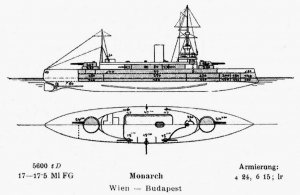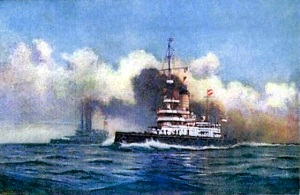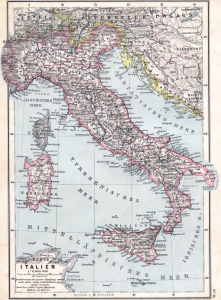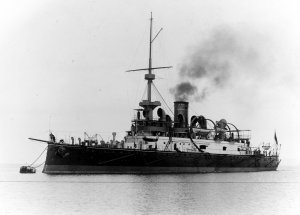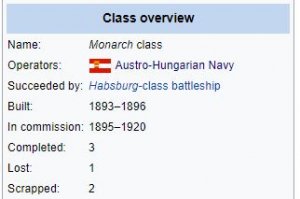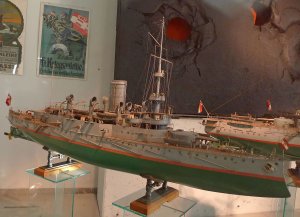Today in Naval History - Naval / Maritime Events in History
8 May 1794 - French Patriote (74), part of a French squadron under Rear-Admiral Joseph-Marie Nielly, captures HMS Castor (32), Cptn. Thomas Troubridge, off Cape Clear.
20 days later she was recaptured by Francis Laforey's HMS Carysfort
HMS Castor was a 32-gun Amazon-class fifth-rate frigate of the Royal Navy. She served during the French Revolutionary and Napoleonic Wars. The French briefly captured her during the Atlantic Campaign of May 1794 but she spent just 20 days in French hands as a British ship retook her before her prize crew could reach a French port. Castor eventually saw service in many of the theatres of the wars, spending time in the waters off the British Isles, in the Mediterranean and Atlantic, as well as the Caribbean.
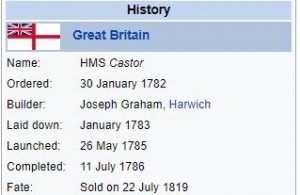
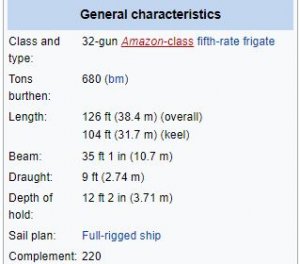
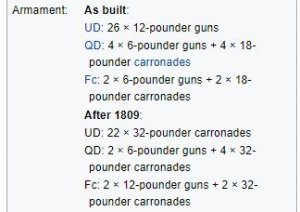
Construction and commissioning
Castor was ordered on 30 January 1782 and laid down in January the following year at the yards of the shipbuilder Joseph Graham, of Harwich. She was launched on 26 May 1785 and completed by July the following year. The ship was then laid up in ordinary at Chatham Dockyard.
Career
Early years
Castor spent nearly five years in ordinary until the Spanish Armament of 1790 caused her to be fitted out at Chatham between June and August 1790 for the sum of £2,795. She commissioned in July that year under Captain John S. Smith, but the easing of international tensions caused Castor to be paid off later that year. The rising tensions with France immediately prior to the outbreak of the French Revolutionary Wars led the Admiralty to again prepare Castor for active service. She was fitted at Chatham between February and April 1793 for £4,066, recommissioning that February under Captain Thomas Troubridge.
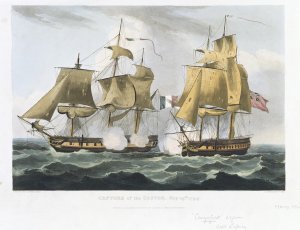
Hand-coloured. The Castor, a British vessel captured by the French (and flying French colours) is shown on the left of the picture, just before her re-capture by the British vessel Carysfort
French Revolutionary Wars and capture
Further information: Frigate action of 29 May 1794
Troubridge sailed for the Mediterranean on 22 May 1793, where in June she and HMS Mermaid captured a 14-gun privateer. Castor was then part of Admiral Hood's fleet at Toulon. While Castor was escorting a convoy back to Britain, on 9 May 1794 a French squadron under Rear-Admiral Joseph-Marie Nielly chased and captured her off Cape Clear. A French prize crew then sailed her back towards France. Twenty days later, on 29 May, Francis Laforey's HMS Carysfort sighted Castor off Land's End and recaptured her. Castor was re-registered as a naval ship on 6 November and recommissioned in January 1795 under Captain Rowley Bulteel. Bulteel took her to the Mediterranean in May 1795, but paid her off in September 1796.
Castor underwent a refit at Plymouth between November 1798 and March 1799, recommissioning under Captain Edward Leveson Gower. In March 1799 a quantity of the gunpowder stores were accidentally ignited, causing severe injury to one of Castor's midshipmen. The injured man having been replaced, Captain Gower sailed Castor to Newfoundland in April 1799, but by December that year Castor was on the Spanish coast when she captured the 2-gun privateer Santa Levivate y Aninimus off Oporto on Christmas Day 1799. Captain David Lloyd took command of Castor in 1801, but he was soon succeeded by Captain Bernard Hale who sailed for the West Indies in April 1801. Hale died in 1802; his successor Captain Richard Peacocke continued to command Castor in the West Indies.
West Indies and Caribbean
Castor returned home, and was fitted out as a guardship for Liverpool between August and October 1803. She came initially under the command of Captain Edward Brace, but by April 1805 she had been moved to Sheerness, where she recommissioned under Captain Joseph Baker. She spent between 1806 and 1809 undergoing a repair and refit, before she came under the command of Captain William Roberts. On 27 March 1808 her boats, along with those of HMS Ulysses, HMS Hippomenes and HMS Morne Fortunee made an unsuccessful attempt to cut out the 16-gun French Griffon from Port Marin, Martinique.
In April 1809, a strong French squadron arrived at the Îles des Saintes, south of Guadeloupe. There they were blockaded until 14 April, when a British force under Major-General Frederick Maitland invaded and captured the islands. Castor was among the naval vessels that shared in the proceeds of the capture of the islands. Castor was next involved in the chase on 16 and 17 April 1809 of the 74-gun French ship of the line Hautpoult off Puerto Rico.
Mediterranean and final years
Captain Charles Dilkes took command in October 1810, and Castor spent 1811 and 1812 on the Leeward Islands and Jamaica stations. She moved to the Mediterranean in late 1812, and on 22 June 1813 captured the 2-gun privateer Fortune off the Catalan coast. She captured two other privateers, the one gun Heureux and Minute (or Minuit), off Barcelona on 22 or 25 January 1814.
Fate
Castor was finally laid up in August 1815 in Portsmouth at the conclusion of the Napoleonic Wars. The Admiralty sold her for breaking up on 22 July 1819 to G. Bailey for the sum of £2,650
Patriote was a Téméraire class 74-gun ship of the line of the French Navy. She was one of the French ships which had their hull doubled with copper.
In September 1793, during the Siege of Toulon, she was taken by the British, who removed her armament and embarked the French sailors sympathetic to the Republic. Admiral Hood having agreed to expel them, she then ferried them to Brest, where she arrived on 16 October.
In 1794 she took part in the battle of the Glorious First of June, in the Croisière du Grand Hiver winter campaign in 1794 and 1795, and in the Expédition d'Irlande in December 1796. In 1806 she was damaged in a hurricane in the caribbean and came to chesapeake bay for shelter where she was blockaded by the British along with EOLE and laid off Annapolis for repairs.until returning to france From 1821, she was used as a hulk.
HMS Carysfort was a 28-gun Coventry-class sixth-rate frigate of the Royal Navy. She served during the American War of Independence, the French Revolutionary and the Napoleonic Wars in a career that spanned over forty years.
She had a number of notable commanders during this period, and saw action in several single-ship actions against French and American opponents. She took several privateers during the American War of Independence, though one of her most notable actions was the recapture of Castor, a Royal Navy frigate that a French squadron had captured nearly three weeks earlier and a French prize crew was sailing to France. Carysfort engaged and forced the surrender of her larger opponent, restoring Castor to the British, though not without a controversy over the issue of prize money. Carysfort spent the later French Revolutionary and early Napoleonic Wars on stations in the East and later the West Indies. Carysfort returned to Britain in 1806 where she was laid up in ordinary. The Admiralty finally sold her in 1813.
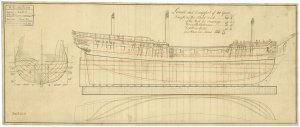
Scale 1:96. Plan showing the body plan, sheer lines with inboard detail, longitudinal half breadth for Levant (1758) and Carysfort (1766), both 28-gun, Sixth Rate Frigates. Date unknown as Carysfort not launched until 1766. Poss represents a time when both ships were in a Royal Dockyard at the same time? NMM, Progress Book, volume 2, folio 595 states that 'Carysfort' (1766) was launched at Sheerness Dockyard on 23 August 1766 and docked on 30 March 1767. She was undocked on 9 June and sailed on 11 August 1767 having been fitted. NMM, Progress Book, volume 2, folio 344 states that 'Levant' (1758) was docked at Sheerness Dockyard on 5 September 1766. she was undocked on 24 September 1766 and sailed on 3 November 1766 having been fitted. This is the only time in their careers that they were in the same dockyard together
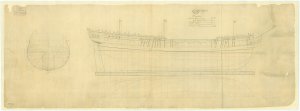
Scale 1:48. Plan showing the body plan, sheer lines, longitudinal half breadth for Carysfort (1766), a 28-gun, Six th Rate Frigate building at Sheerness Dockyard

 en.wikipedia.org
https://collections.rmg.co.uk/collections/objects/109627.html
en.wikipedia.org
https://collections.rmg.co.uk/collections/objects/109627.html
https://en.wikipedia.org/wiki/French_ship_Patriote_(1785)
https://en.wikipedia.org/wiki/HMS_Carysfort_(1766)
https://collections.rmg.co.uk/colle...el-300556;browseBy=vessel;vesselFacetLetter=C
8 May 1794 - French Patriote (74), part of a French squadron under Rear-Admiral Joseph-Marie Nielly, captures HMS Castor (32), Cptn. Thomas Troubridge, off Cape Clear.
20 days later she was recaptured by Francis Laforey's HMS Carysfort
HMS Castor was a 32-gun Amazon-class fifth-rate frigate of the Royal Navy. She served during the French Revolutionary and Napoleonic Wars. The French briefly captured her during the Atlantic Campaign of May 1794 but she spent just 20 days in French hands as a British ship retook her before her prize crew could reach a French port. Castor eventually saw service in many of the theatres of the wars, spending time in the waters off the British Isles, in the Mediterranean and Atlantic, as well as the Caribbean.



Construction and commissioning
Castor was ordered on 30 January 1782 and laid down in January the following year at the yards of the shipbuilder Joseph Graham, of Harwich. She was launched on 26 May 1785 and completed by July the following year. The ship was then laid up in ordinary at Chatham Dockyard.
Career
Early years
Castor spent nearly five years in ordinary until the Spanish Armament of 1790 caused her to be fitted out at Chatham between June and August 1790 for the sum of £2,795. She commissioned in July that year under Captain John S. Smith, but the easing of international tensions caused Castor to be paid off later that year. The rising tensions with France immediately prior to the outbreak of the French Revolutionary Wars led the Admiralty to again prepare Castor for active service. She was fitted at Chatham between February and April 1793 for £4,066, recommissioning that February under Captain Thomas Troubridge.

Hand-coloured. The Castor, a British vessel captured by the French (and flying French colours) is shown on the left of the picture, just before her re-capture by the British vessel Carysfort
French Revolutionary Wars and capture
Further information: Frigate action of 29 May 1794
Troubridge sailed for the Mediterranean on 22 May 1793, where in June she and HMS Mermaid captured a 14-gun privateer. Castor was then part of Admiral Hood's fleet at Toulon. While Castor was escorting a convoy back to Britain, on 9 May 1794 a French squadron under Rear-Admiral Joseph-Marie Nielly chased and captured her off Cape Clear. A French prize crew then sailed her back towards France. Twenty days later, on 29 May, Francis Laforey's HMS Carysfort sighted Castor off Land's End and recaptured her. Castor was re-registered as a naval ship on 6 November and recommissioned in January 1795 under Captain Rowley Bulteel. Bulteel took her to the Mediterranean in May 1795, but paid her off in September 1796.
Castor underwent a refit at Plymouth between November 1798 and March 1799, recommissioning under Captain Edward Leveson Gower. In March 1799 a quantity of the gunpowder stores were accidentally ignited, causing severe injury to one of Castor's midshipmen. The injured man having been replaced, Captain Gower sailed Castor to Newfoundland in April 1799, but by December that year Castor was on the Spanish coast when she captured the 2-gun privateer Santa Levivate y Aninimus off Oporto on Christmas Day 1799. Captain David Lloyd took command of Castor in 1801, but he was soon succeeded by Captain Bernard Hale who sailed for the West Indies in April 1801. Hale died in 1802; his successor Captain Richard Peacocke continued to command Castor in the West Indies.
West Indies and Caribbean
Castor returned home, and was fitted out as a guardship for Liverpool between August and October 1803. She came initially under the command of Captain Edward Brace, but by April 1805 she had been moved to Sheerness, where she recommissioned under Captain Joseph Baker. She spent between 1806 and 1809 undergoing a repair and refit, before she came under the command of Captain William Roberts. On 27 March 1808 her boats, along with those of HMS Ulysses, HMS Hippomenes and HMS Morne Fortunee made an unsuccessful attempt to cut out the 16-gun French Griffon from Port Marin, Martinique.
In April 1809, a strong French squadron arrived at the Îles des Saintes, south of Guadeloupe. There they were blockaded until 14 April, when a British force under Major-General Frederick Maitland invaded and captured the islands. Castor was among the naval vessels that shared in the proceeds of the capture of the islands. Castor was next involved in the chase on 16 and 17 April 1809 of the 74-gun French ship of the line Hautpoult off Puerto Rico.
Mediterranean and final years
Captain Charles Dilkes took command in October 1810, and Castor spent 1811 and 1812 on the Leeward Islands and Jamaica stations. She moved to the Mediterranean in late 1812, and on 22 June 1813 captured the 2-gun privateer Fortune off the Catalan coast. She captured two other privateers, the one gun Heureux and Minute (or Minuit), off Barcelona on 22 or 25 January 1814.
Fate
Castor was finally laid up in August 1815 in Portsmouth at the conclusion of the Napoleonic Wars. The Admiralty sold her for breaking up on 22 July 1819 to G. Bailey for the sum of £2,650
Patriote was a Téméraire class 74-gun ship of the line of the French Navy. She was one of the French ships which had their hull doubled with copper.
In September 1793, during the Siege of Toulon, she was taken by the British, who removed her armament and embarked the French sailors sympathetic to the Republic. Admiral Hood having agreed to expel them, she then ferried them to Brest, where she arrived on 16 October.
In 1794 she took part in the battle of the Glorious First of June, in the Croisière du Grand Hiver winter campaign in 1794 and 1795, and in the Expédition d'Irlande in December 1796. In 1806 she was damaged in a hurricane in the caribbean and came to chesapeake bay for shelter where she was blockaded by the British along with EOLE and laid off Annapolis for repairs.until returning to france From 1821, she was used as a hulk.
HMS Carysfort was a 28-gun Coventry-class sixth-rate frigate of the Royal Navy. She served during the American War of Independence, the French Revolutionary and the Napoleonic Wars in a career that spanned over forty years.
She had a number of notable commanders during this period, and saw action in several single-ship actions against French and American opponents. She took several privateers during the American War of Independence, though one of her most notable actions was the recapture of Castor, a Royal Navy frigate that a French squadron had captured nearly three weeks earlier and a French prize crew was sailing to France. Carysfort engaged and forced the surrender of her larger opponent, restoring Castor to the British, though not without a controversy over the issue of prize money. Carysfort spent the later French Revolutionary and early Napoleonic Wars on stations in the East and later the West Indies. Carysfort returned to Britain in 1806 where she was laid up in ordinary. The Admiralty finally sold her in 1813.

Scale 1:96. Plan showing the body plan, sheer lines with inboard detail, longitudinal half breadth for Levant (1758) and Carysfort (1766), both 28-gun, Sixth Rate Frigates. Date unknown as Carysfort not launched until 1766. Poss represents a time when both ships were in a Royal Dockyard at the same time? NMM, Progress Book, volume 2, folio 595 states that 'Carysfort' (1766) was launched at Sheerness Dockyard on 23 August 1766 and docked on 30 March 1767. She was undocked on 9 June and sailed on 11 August 1767 having been fitted. NMM, Progress Book, volume 2, folio 344 states that 'Levant' (1758) was docked at Sheerness Dockyard on 5 September 1766. she was undocked on 24 September 1766 and sailed on 3 November 1766 having been fitted. This is the only time in their careers that they were in the same dockyard together

Scale 1:48. Plan showing the body plan, sheer lines, longitudinal half breadth for Carysfort (1766), a 28-gun, Six th Rate Frigate building at Sheerness Dockyard

HMS Castor (1785) - Wikipedia
https://en.wikipedia.org/wiki/French_ship_Patriote_(1785)
https://en.wikipedia.org/wiki/HMS_Carysfort_(1766)
https://collections.rmg.co.uk/colle...el-300556;browseBy=vessel;vesselFacetLetter=C



